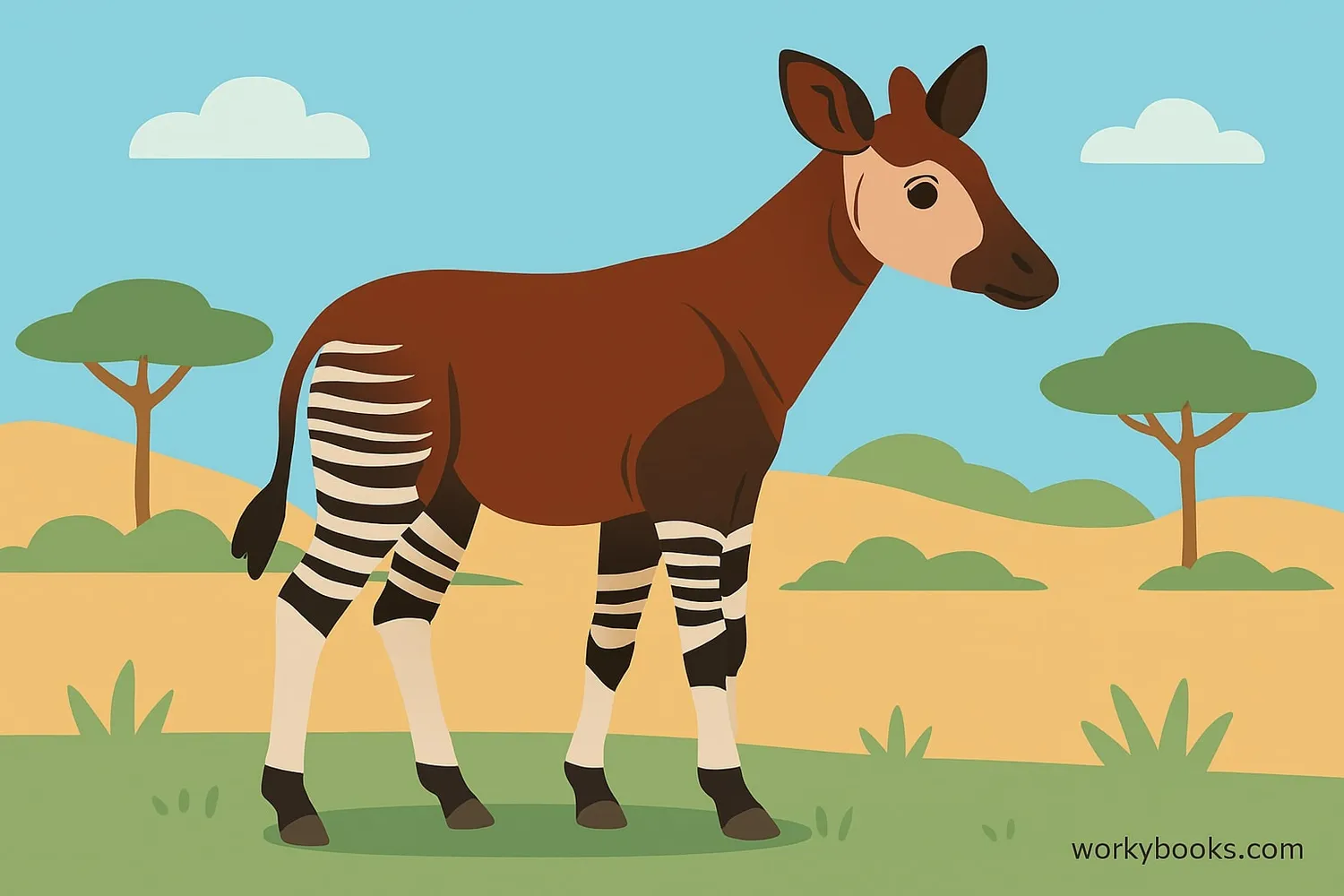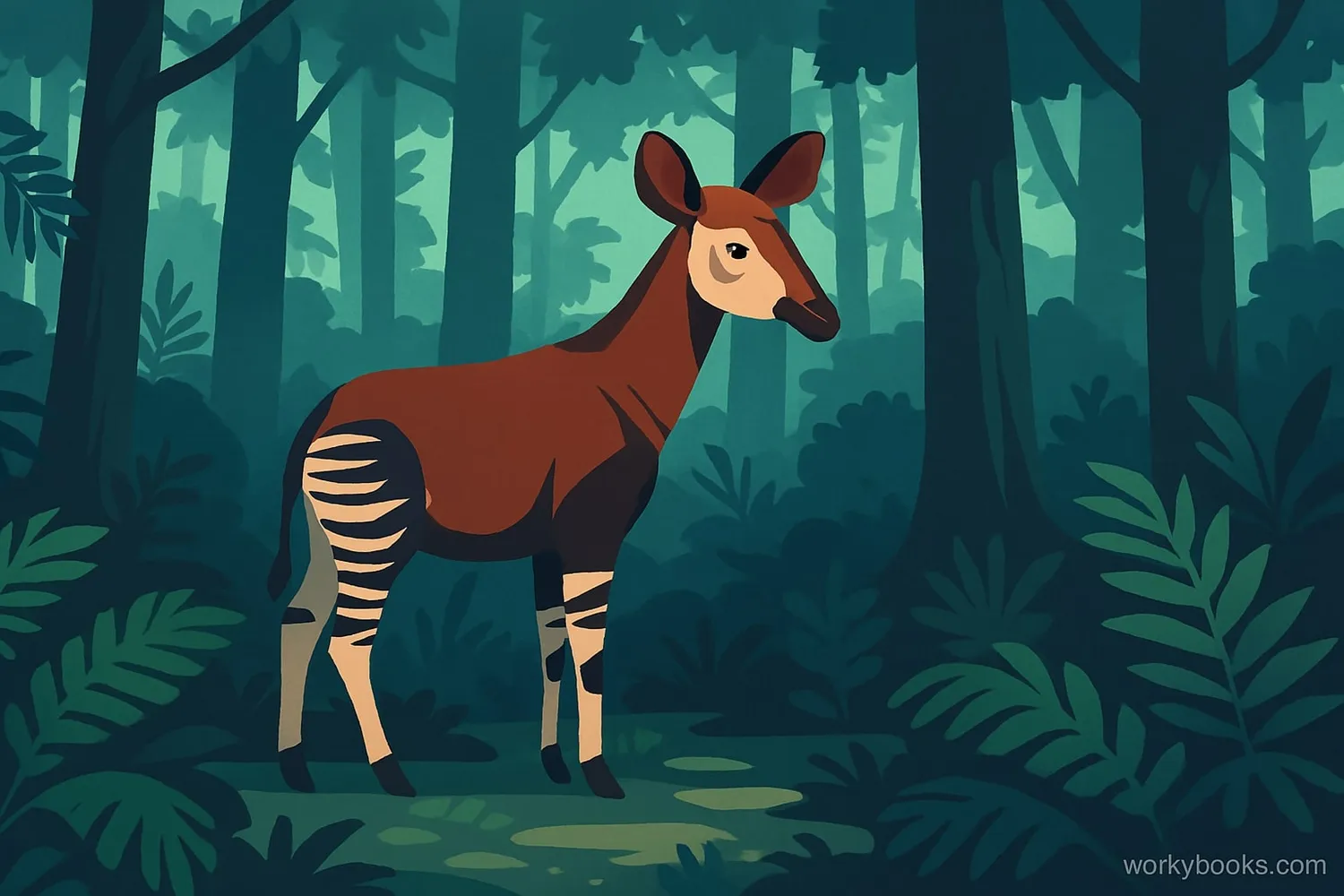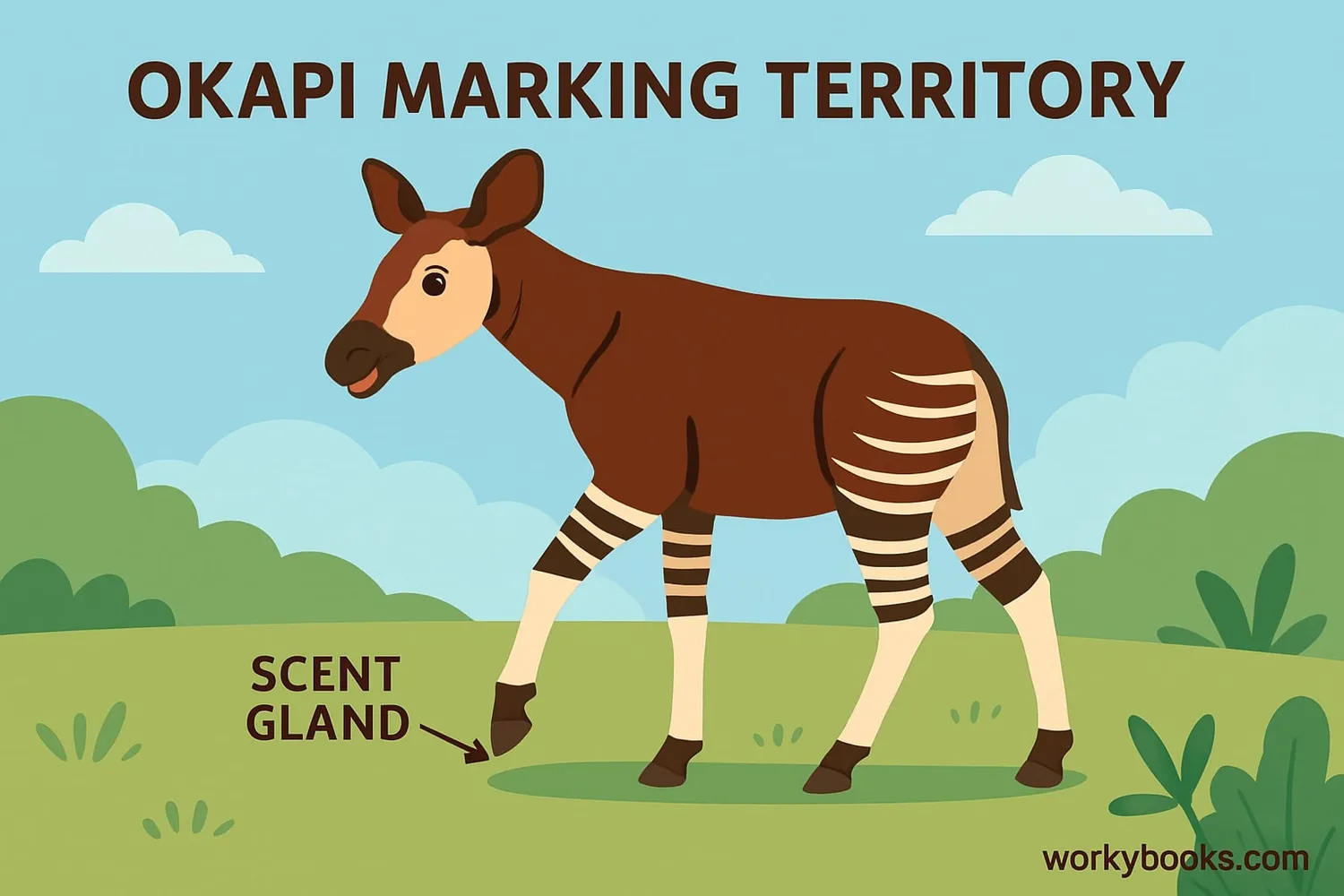Okapi - Definition, Examples, Quiz, FAQ, Trivia
Learn about the mysterious forest giraffe of the Congo
What is an Okapi?

The okapi (pronounced oh-KAH-pee) is a fascinating mammal that looks like a mix between a zebra and a giraffe! This unique animal is actually the giraffe's only living relative. Though it has striped legs like a zebra, its body shape and long neck show its giraffe family connection.
Okapis stand about 5 feet (1.5 meters) tall at the shoulder and have velvety, dark reddish-brown fur. Their most striking feature is the zebra-like black-and-white stripes on their legs and rear. These stripes help them blend into the dappled light of the rainforest.
Size
5-6 feet long, 4.9-6.6 feet tall
Weight
440-770 pounds (200-350 kg)
Lifespan
20-30 years in captivity
Special Features
14-18 inch long tongue
Did You Know?
Okapis weren't known to Western scientists until 1901! For many years, people thought this mysterious animal was just a legend.
Habitat & Home

Okapis live only in the dense, tropical rainforests of the Democratic Republic of Congo in Central Africa. This special habitat provides everything they need to survive - food, water, and protection from predators.
Their ideal home has:
• Dense vegetation for cover
• Rivers and streams for water
• Plenty of fruiting trees and shrubs
• Thick undergrowth for hiding
Because they live in such remote, hard-to-reach places, okapis are very difficult to study in the wild. Scientists estimate there are only about 10,000-25,000 okapis left in their natural habitat.
Habitat Protection
The Okapi Wildlife Reserve covers about 20% of the Ituri Forest and is a UNESCO World Heritage Site. This protected area is vital for okapi conservation.
Diet & Feeding

Okapis are herbivores, meaning they eat only plants. Their diet includes:
• Tree leaves and buds
• Grasses and ferns
• Fruits
• Fungi
• Sometimes clay for minerals
Like their giraffe relatives, okapis have an incredibly long (14-18 inch), prehensile tongue that's dark blue-black in color. They use this amazing tongue to strip leaves from branches and groom themselves, even cleaning their own eyelids and ears!
Feeding Time
Okapis spend 6-8 hours each day foraging for food
Water Needs
They get most water from plants but drink regularly
Favorite Food
They particularly enjoy eating plants in the coffee family
Behavior

Okapis are shy, solitary animals that live alone except when mothers are raising their calves. They have several fascinating behaviors:
Communication: Okapis use scent marking as their main way to communicate. They have scent glands on each foot that leave a tar-like substance as they walk. They also use low-frequency sounds that humans can't hear to communicate over long distances in the dense forest.
Daily Patterns: Okapis are active during the day (diurnal) and follow well-trodden paths through the forest that they mark with their scent. They have large territories that can be 2-5 square miles in size.
Special Adaptation
Okapis have excellent hearing that helps them detect predators like leopards. Their large, movable ears can rotate independently to pinpoint sounds.
Conservation

Okapis are classified as Endangered on the IUCN Red List of Threatened Species. Their population has declined by about 50% over the past 25 years due to several threats:
• Habitat loss from logging and human settlement
• Poaching for their meat and skin
• Mining activities
• Civil unrest in their native region
Conservation efforts are underway to protect these unique animals:
• The Okapi Wildlife Reserve was established in 1992
• Anti-poaching patrols help protect okapis
• Breeding programs in zoos worldwide
• Community education programs
You Can Help!
Support organizations working to protect okapis and their habitat. Every contribution helps conservation efforts in the Congo rainforest.
Okapi Quiz
Test your okapi knowledge with this fun quiz! Answer all 5 questions to see how much you've learned.
Frequently Asked Questions
Here are answers to some common questions about okapis:
Fun Okapi Trivia
Discover some amazing facts about okapis!
Hidden Discovery
For many years, Western scientists thought the okapi was just a mythical creature! It wasn't scientifically described until 1901 by British explorer Sir Harry Johnston.
Amazing Tongue
An okapi's tongue is so long (14-18 inches) that it can lick its own ears! The tongue is also prehensile, meaning it can grasp leaves like a hand.
Super Senses
Okapis have excellent hearing and can detect sounds too low for humans to hear. Their large ears can rotate independently to pinpoint sounds in the dense forest.
Baby Okapis
Newborn okapis can stand within 30 minutes of birth! They weigh about 30-65 pounds at birth and stay hidden in vegetation for the first two months of life.


